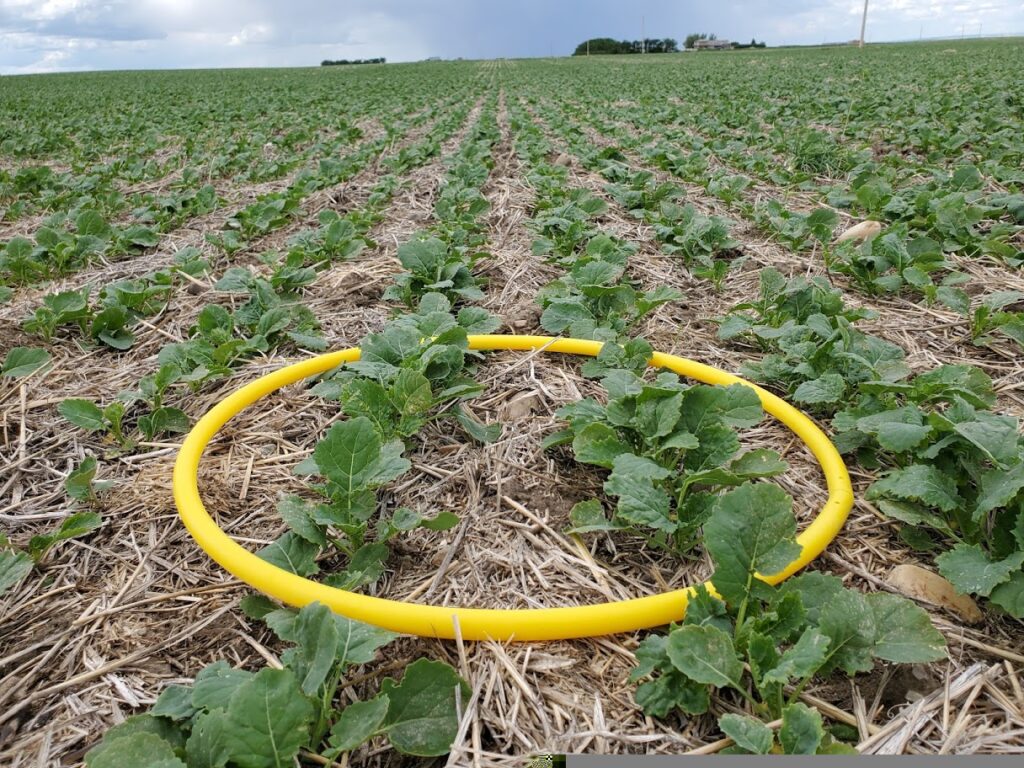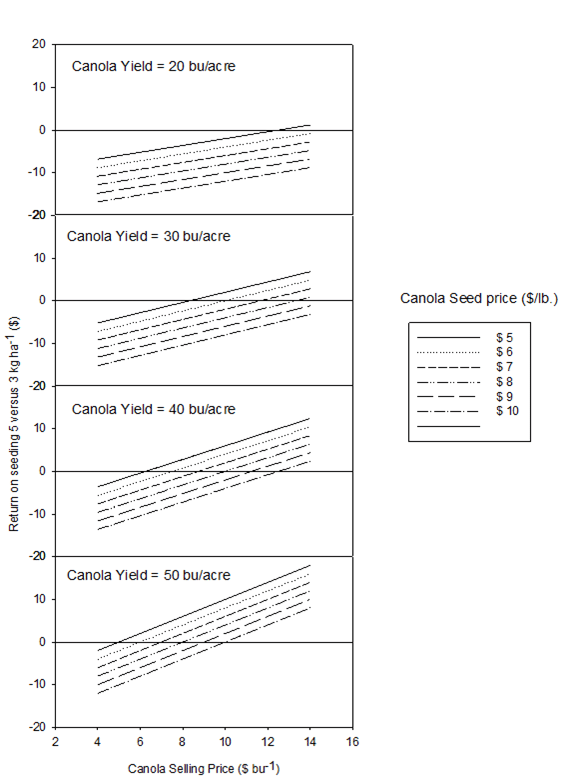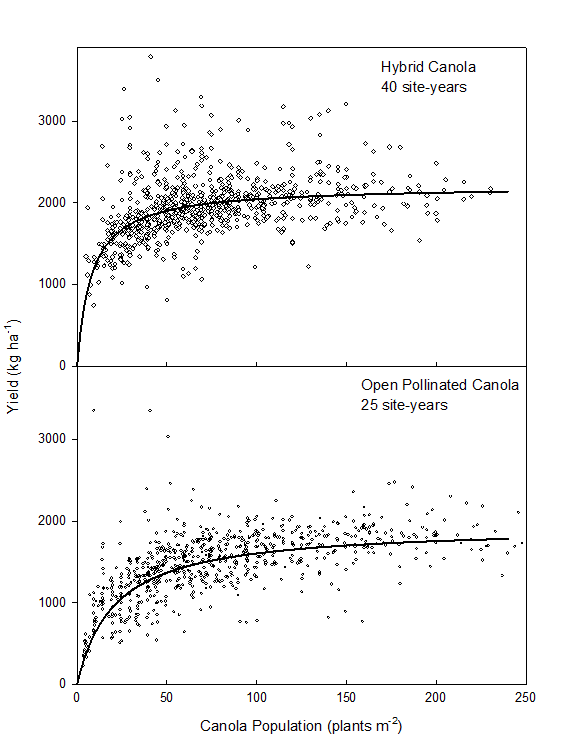Key Result
Economically it is more profitable to seed lower seeding rates of canola when seed costs are high, and when the selling price and yield of canola is low. However reducing seeding rates have a greater risk of having lower populations which can result in large yield losses. Canola farmers seeking to maximize returns should target populations greater than 50 plants m-2 (5 foot-2). Plant populations lower than this will almost always have yield loss.
Project Summary
Overview
Seed costs for canola are high prompting many growers to seed at reduced rates. Although there have been many seeding rate studies done for canola, the optimum seeding rate and plant population for canola is not known. Meta-analysis offers a way of combining data from different experiments to conduct a combined mixed model analysis.

Objective
The objective of this study is to conduct a meta-analysis of canola seeding rate and plant population trials in order to determine the optimum seeding rate and plant population. Summary data from 35 experiments were included in the dataset which comprised 176 site-years of experiments.
Results
A categorical analysis comparing yields of approximately 3 versus 5 kg ha-1 was conducted. It was determined that canola seeded at 5 kg ha-1 had on average a 4% higher yield than canola seeded at 3 kg ha-1. The site years which had the greatest yield reduction were those in which the emergence of the 3 kg ha-1 treatment was lower than 45 plants m-2.

A second analysis examined the effect of canola population density on yield. In contrast to the categorical analysis it was found that the yield response of open pollinated canola differed from that of hybrid canola. In general hybrid canola reached its maximum yield at lower densities than open pollinated canola. Hybrid canola achieved 90% of its yield at 45 plants m-2 compared to 90 plants m-2 for open pollinated canola. Hybrid canola appears to maintain a large proportion of its yield at low plant densities although very few studies had low canola densities.
Conclusions
Hybrid canola appears to maintain a large proportion of its yield at low plant densities, although very few studies at the time of this meta-analysis had low canola densities.
Economically it is more profitable to seed lower seeding rates of canola when seed costs are high, and when the selling price and yield of canola is low. However reducing seeding rates have a greater risk of having lower populations which can result in large yield losses. Emergence is often low in canola making reduced seeding rates a risky decision.
Canola farmers seeking to maximize returns should target populations greater than 50 plants m-2 (5 foot-2). Plant populations lower than this will almost always have yield loss.
Related research
For more research on this topic, see the Canola plant establishment meta-analysis project and its related What is the most economical seeding rate? article.







